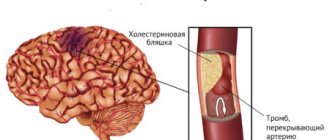Vegetative-vascular dystonia includes a whole complex of symptoms, and one of them is derealization. This condition is so unusual and specific that when it occurs, it can greatly frighten an already anxious neurotic. By the way, derealization does not occur so often. But once it’s “covered,” it can last a long time. Actually this is the most disgusting thing.
What is derealization in VSD, what are the symptoms of this disorder and how to get rid of this most unpleasant condition - we will analyze these questions in the article.
general information
Derealization is a type of neurosis. There is a violation of psychosensory perception of the surrounding world. The person denies the reality of what is happening. There is a feeling that he is in some kind of virtual space. Sounds may seem synthesized to him, objects may seem flat, and colors may seem faded or too bright.
Symptoms of derealization and depersonalization are not present all the time. But it “covers” a person sharply and suddenly. The occurrence of an attack is dangerous because disorientation in space may appear. At the same time, the patient is not able to understand where he should go.
Treatment
Often, people with VSD mistakenly believe that self-medication with sedatives will eventually eliminate the problem. But the feeling of the unreality of what is happening is only a symptom, a “bell” of a deep problem lying at the bottom of the soul.
In general, almost all symptoms of VSD are treated according to the standard regimen. First, the patient must visit a psychotherapist who will identify the true cause of the illness. Then treatment will begin, which should be comprehensive. If necessary, the patient is prescribed certain medications. Habits, sleep and eating patterns are adjusted. The psychological state is restored.
Reality should bring joy - this is the first rule for a patient with derealization symptoms. Nature not only taught man how to respond to stress, but also gave him the resources to “repair” the soul.
Derealization is a strange state in which the surrounding world is perceived as alien, artificial, distant. This condition is not a psychotic disorder. Derealization may well be present with vegetative-vascular dystonia, and especially with panic attacks.
Main provoking factors
Derealization is a well-known illness in psychology. Its symptoms are present in approximately 4% of people. This figure is growing every year. There are serious reasons for derealization. The main provocateurs are constant severe stress, anxiety, and depression. Against this background, some people distance themselves not only from the surrounding reality, but also from their “I”.
Drug use
Derealization syndrome occurs after smoking weed. Hashish fans are at risk. Against the background of an overdose of LSD or cannabinoids, personal self-perception is upset. After hashish, a feeling of the fantastic nature of what is happening appears.
Physiological factors
Depersonalization and dereal may occur against the background of:
- Regular lack of sleep.
- Difficulties in work or study.
- Uncomfortable living conditions.
- Poor environmental conditions.
A feeling of unreality of what is happening can arise in a person who has difficulties with his superiors and constantly restrains his emotions when interacting with him.
Other reasons for derealization
The syndrome appears when:
- vegetative vascular dystonia;
- psycho-emotional trauma;
- somatic pathologies;
- hypertonicity of the neck muscles;
- various mental disorders.
A patient who has been diagnosed with derealization due to VSD tells the doctor about frequent panic attacks. The main difference from the manifestations of the syndrome in other disorders here is the criticality of one’s own condition. A person understands that something wrong is happening to him.
Against this background, panic often arises. Many people with VSD are afraid of going crazy. The main thing here is to understand yourself and try to find the real reasons for constant internal anxiety, which causes an absolutely normal reaction of the autonomic system.
For cervical osteochondrosis
Interruptions in perception often accompany degenerative disorders of the spine. Mild derealization is common in cervical osteochondrosis. This part of the spine has a large number of arteries and endings. They saturate the brain with oxygen. When blood vessels are compressed, blood flow slows down.
I'm crazy?
It’s hard for a VSDer to believe that with such a feeling of unreality in his head, he is still not among the ranks of the crazy. The world has ceased to be familiar, even the soul is lost, isn’t this schizophrenia? There are three important features that distinguish the “dereal” in VSD from the “dereal” of a mental patient:
- The VSD worker is still afraid of madness and “tests” himself for it: this means that he is able to assess what is happening.
- With VSD “dereal” there are no hallucinations, either visual or auditory. The world is distorted, but there are no new objects or new voices in it.
- Dystonics do not have any mania, they do not consider themselves to be the embodiment of other beings and do not perform mentally automated actions.
Distortion of reality during VSD is not the beginning of madness. This is just our psyche’s response to an overdose of stress and phobias. “Dereal” does not manifest itself in every person with VSD and does not directly depend on the amount of stress (each person has his own threshold of mental stability).
But, having once experienced a similar condition, the patient begins to wait for it again. In the same way, people with VSDs anticipate with horror the approach of a new panic attack or attack of tachycardia. Anticipation of a frightening state provokes its appearance. It is difficult to get out of such a vicious circle on your own. The help of a psychotherapist is needed.
How does derealization manifest itself?
Derealization has quite specific symptoms. It is often confused with schizophrenia or considered its predecessor. This is wrong. A schizophrenic is constantly in the world he has created. The syndrome of depersonalization and derealization is expressed in the form of separate attacks of disorientation.
During attacks, distortion of reality is observed in the following aspects:
- Visual.
- Auditory.
- Olfactory.
- Spatial.
Features of visual distortions
A person who wants to know what dereal is must have an understanding of visual impairments. The shapes of objects become fuzzy and blurry. Sometimes they take on a “wavy” shape.
For some people, side objects may merge into a solid wall. This condition is called tunnel vision.
Bright circles may appear in front of the organs of vision, diverging as if through water. Objects lose color, everything around becomes like a drawing made with a pencil. Some patients feel that the world has become like a cartoon.
Features of auditory distortion
Derealization in neurosis is accompanied by auditory distortions. A person may complain that the other person’s speech seems slow to him, like a recording on a broken record.
Street noises are dulled. Individual sounds may stand out sharply. Some patients are deafened by the sound of their own steps on the paving slabs. Sometimes there is ringing in the ears. The hearing organs may become clogged.
Features of spatial distortions
It seems to a person that the floor is disappearing from under his feet. Some lose the ability to judge distance. They may think the door is far away, when in fact they only need to walk a few steps to get there. At the same time, a person hits doorposts, stumbles out of the blue, or stumbles on the stairs.
Some people feel like time has stopped. Memory may be lost for a short period. One common spatial distortion is the feeling of déjà vu.
Features of olfactory distortions
Some people experience olfactory hallucinations due to derealization. It seems to the patient that water and usual food have an unpleasant “aroma”. Sometimes the smells can be pleasant. But if they pursue a person, they also begin to irritate him.
Olfactory hallucinations can “suggest” such an intrusive aroma that it is impossible to differentiate in real life. Often a person is haunted by a smell associated with a particular event.
Other signs of derealization
There is confusion. A person has great difficulty imagining familiar surroundings. Often he does not remember whether he had lunch today, where he planned to go, or whether he took medications.
If depersonalization-derealization syndrome appeared while taking hashish, then the person’s arms and legs may go numb. Visual images are distorted. After hashish, hallucinosis also appears.
With derealization and cervical osteochondrosis, headaches occur. Coordination of movements is impaired, there is constant weakness. A man complains that he feels dizzy. A ripple appears before my eyes. If the underlying pathology is ignored, the symptoms worsen.
What unreal thing is happening?
It is not only those who suffer from the feeling of unreality in an altered consciousness. The list will be replenished with both patients with mental illnesses and drug addicts, and the most ordinary people in a stressful situation. These are all tricks of human nature. Under the weight of great stress, it is necessary to “separate”, “break away” from surrounding objects and events, quickly come up with a plan of action and make the right decision. Sometimes life depends on it. Therefore, the human brain is endowed with the ability to turn off its usual vision of the world in order to concentrate on truly important things. VSDers, whose nervous system is usually heated to a critical degree, sooner or later encounter “dereal”. How can it manifest itself?
- Distorted perception of the surrounding picture: the world around may seem blurry or made of plastic. The perception of color, smell, time changes. The city can become like the virtual space of some computer game with impossibly bright colors or like the surface of the Moon, where everything is lifeless and dim. Sounds can be annoying or, on the contrary, muffled. Psychotherapists call this feeling of the unreality of what is happening “derealization” (hence, in fact, the word “dereal” came into the dictionary of the VSD student).
- Distorted sense of one’s own body (in psychotherapeutic language, “depersonalization”). The patient may suddenly stop feeling his own body, “forget” how to walk and frantically control his every step. For a VSD sufferer suffering from hypochondria, it is especially difficult to feel such a symptom. A leg or arm may suddenly seem to be missing or out of place. Some parts of the body seem to lose connection with the brain, and the brain ceases to be responsible for their proper functioning. And, despite the fact that the arms and legs still work properly, the patient is not sure that his head controls the limbs. Another curious form of depersonalization: a person suddenly desperately tries to understand his own “I”. How can I think? Where did my soul come from? Why am I exactly me? And if in the first described case of depersonalization the connection between the brain and parts of the body is lost, then in this situation the personality with all emotions, sensations and thoughts is torn away from the brain.
Clarifying the diagnosis
If you discover at least a few symptoms, you need to visit a psychotherapist as soon as possible. First, a psychological test for derealization is carried out. Diagnostic methods such as the Beck scale and Nuller scale are used. Urgent treatment is prescribed when a person scores 25 points on the Nuller scale.
First stage of diagnosis
The psychotherapist undertakes to interview the patient. The following points are clarified:
- the presence of close relatives suffering from derealization;
- the nature of family relationships;
- the patient's addiction to alcohol and drugs;
- presence of suicidal tendencies;
- presence of brain injuries.
Then the doctor interviews the patient’s relatives, friends and colleagues. Next, the specialist checks reflexes and the condition of the skin.
Making a diagnosis is quite simple. The patient has confused thoughts and has great difficulty formulating them. If his perception of sounds has changed, he constantly listens. When there is a feeling of a veil before the eyes, a person peers intently into the surrounding space. If olfactory hallucinations are present, the patient involuntarily winces.
Second stage of diagnosis
If the psychotherapist deems it necessary, the patient is referred to:
- X-ray.
- Ultrasound examination of the brain.
- Sleep EEG.
Derealization is accompanied not only by olfactory hallucinations and confusion. There is a disturbance in the production of serotonin, norepinephrine and some acids. Therefore, the patient is additionally prescribed laboratory tests. After this, the doctor begins treatment for derealization.
How you can help
The answer to the question whether it is possible to get rid of derealization is positive. Therapy includes:
- psychoanalysis;
- cognitive behavioral psychotherapy;
- improvement of living conditions;
- taking medications.
Psychotherapy for derealization
If a person has been diagnosed with derealization, then the answer to the question of how to get rid of painful symptoms can be obtained during cognitive behavioral psychotherapy.
The main goal of this treatment method is to restore three personal levels:
- Behavioral.
- Emotional.
- Cognitive.
Muscle relaxation is used. A person is taught to get rid of emotional clamps. As a result, the patient can control the attacks.
Self-help for derealization
How to get rid of derealization yourself? Timely preventative measures can help. These include:
- Daily walks.
- Doing physical exercise.
- Dieting.
- Active communication with people.
It is advisable to take a walk in a park or near a natural body of water. The optimal time of day is morning or early evening. The duration of the walk is 1.5-2 hours.
Physical activity during derealization should not be very great. It is recommended to prefer light fitness aerobics or regular jogging to strength training.
It is recommended to exclude stimulating foods from the diet. It is advisable to stop drinking chocolate, coffee, and alcohol. Quitting smoking and taking heavy drugs is important.
Features of treatment
The main feature of changes in psychological state remains dysfunction of the autonomic nervous system. Therefore, therapy for VSD and derealization coincides. If it is possible to normalize the functioning of the ANS, stabilize the patient’s well-being with the leveling of typical symptoms, then the psychological state will quickly return to normal.
The medical approach to the progression of the feeling of derealization includes the use of the following groups of drugs:
- antidepressants;
- sedatives;
- neuroprotectors.
Improving the functioning of the central nervous system and autonomic nervous system will reduce the severity of anxiety and put thoughts in order. The patient will restore the perception of the surrounding world and get rid of derealization.
Also, for VSD, symptomatic therapy is used to relieve panic attacks. It can be:
- antihypertensive tablets or drops;
- antiarrhythmics;
- analgesics.
The main thing is to relieve the attack, which provokes derealization.
Other methods are also used. Effective in combating changes in the perception of the world:
- Psychotherapy. The best way to understand the root causes of the problem, normalize your well-being and set you up for positive thinking.
- Meditation and auto-training. The ability to control self-awareness is an important part of stabilizing the patient’s psychological state.
- Massage and physiotherapy. Relaxing procedures strengthen a person’s psyche and increase their resistance to stress.
- Herbal medicine and folk remedies. The use of herbs and plants has a beneficial effect on the general condition of the patient with VSD.
Derealization is an uncommon sign of autonomic dysfunction. Treatment of pathology quickly stabilizes the psychological and somatic health of the patient.
The help of a psychiatrist is required if the symptoms of derealization are accompanied by:
- visible violations and deviations in human behavior;
- strange actions;
- weakening of will and motivation;
- inactivity and lack of initiative;
- the appearance of sloppiness;
- if there is a suspicion that the person is in the grip of delusion and hallucinations are taking place.
With these signs, the onset of schizophrenia and other mental illnesses may occur.
Drug therapy
Your doctor will tell you how to treat derealization. The treatment program involves taking:
- nootropics;
- antioxidants;
- cytoprotectors;
- antidepressants with sedative effects;
- antipsychotics.
Among the nootropics for derealization, Noocetam is prescribed, and among the antioxidants, Mexidol. Cytoflavin is considered the most powerful cytoprotector. The best antipsychotic is Sonapax. Among the antidepressants for derealization, Paroxetine is often prescribed.
Vitamins help the patient recover. The doctor also prescribes sedatives and antidepressants. If improvements do not occur, tranquilizers are prescribed.
If the patient’s condition remains serious, the attending physician makes a decision to place him in a hospital.
Lamotrigine for derealization
One of the most powerful drugs is Lamotrigine. It was originally used in the treatment of epilepsy. Lamotrigine is prescribed concomitantly with inhibitors that reuptake serotonin. The medicine allows you to get rid of some symptoms of the disorder and provides an antidepressant effect.
Lamotrigine helps improve cognitive functioning in humans. Taking it helps normalize memory. Lamotrigine protects nerve cells and reduces the release of glutamate. Against the background of its use, the effect of other drugs is enhanced.
Lamotrigine has also been successfully used in the treatment of depersonalization.
Paroxetine for derealization
The drug Paroxetine helps combat derealization. It is a selective inhibitor of serotonin reuptake by neurons in the brain. Paroxetine is prescribed both in hospital and outpatient treatment. The drug is not prescribed to persons under 14 years of age.
Paroxetine is taken 1 time/24 hours, preferably in the morning. It is best to take the medicine with food. Paroxetine may have effects on the central nervous system, autonomic nervous system and cardiovascular system. Therefore, the medicine is prescribed with caution.
Let's sum it up
Not a single person is immune from the occurrence of derealization against the background of VSD. However, not all people suffering from VSD also receive this pathology. The explanation for this may be strong shock shocks with parallel weak mental resistance to stress. Fighting this pathology on your own is more than unwise, since it may not be a superficial reaction to stress, but the body’s response to deeper psychological or neurological abnormalities.
It is possible to identify the cause and provide high-quality treatment for the disease only under the supervision of specialists. The patient’s task in this case is to follow doctors’ recommendations, take prescribed medications, attend all necessary procedures and adjust their lifestyle in the right direction.
Finally
No one can avoid stress. Therefore, it is important to learn how to minimize their consequences. Relaxation techniques help a lot. You also need to master several breathing exercises.
It is important to be thoroughly examined. Sometimes symptoms such as olfactory hallucinations indicate a tumor in the brain.
A person who leads an active lifestyle, communicates with people, travels and realizes his creative potential will one day be able to understand that he has been cured of derealization. This is not a sentence. The sooner the pathology is identified, the faster the recovery will occur.
- VSD and pregnancy
- What is the reason for tachycardia after eating?
- How dangerous is vegetative-vascular dystonia?
- How to treat VSD of the hypertensive type











